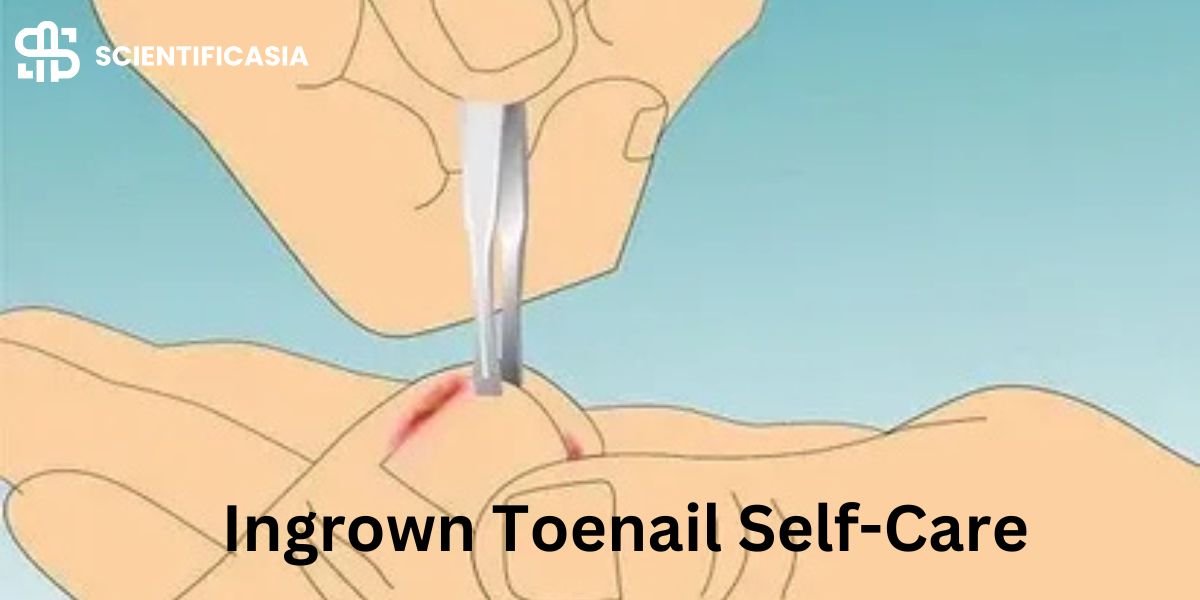Ingrown Toenails: A Comprehensive Overview
When your toenail—usually the big toe—grows into the surrounding skin, it results in an ingrown toenail. This condition can cause pain, redness, swelling, and even infection. Several factors contribute to ingrown toenails, such as fungal infections, tight-fitting shoes, genetic predisposition, and improper nail care. Effective ingrown toenail self-care starts with understanding these underlying causes.
Recognizing the Signs of Ingrown Toenails
The symptoms of ingrown toenails include pain in the nail or surrounding skin, redness around the affected area, fluid discharge, and occasionally sharp nail edges digging into the skin. As the condition progresses, swelling around the toe may also occur.
To control early symptoms, self-care techniques like soaking the affected toe in warm salt water daily can be helpful. Placing dental floss or an antiseptic cotton ball between the nail edge and the skin may also aid in alleviating discomfort. If the condition is minor, you can often treat it at home.
However, if an infection is present or if you have medical conditions like diabetes or peripheral vascular disease that put your feet at risk, self-care might not be sufficient. In such cases, a doctor’s intervention is necessary.
Root Causes of Ingrown Toenails
Tight shoes or hosiery can force the toes together, causing the nail to press into and cut the skin, leading to an ingrown toenail. People with diabetes and infections are particularly susceptible to this condition.
An ingrown toenail typically occurs when the edge or corner of the nail—often on the big toe—pierces the surrounding flesh, resulting in an infection.
This common condition often leads to red, swollen, and inflamed toenails that may leak pus or become discolored. As a result, walking or wearing shoes can become painful.
Ingrown Toenail Self-Care at Home
Several at-home techniques can help alleviate the pain and promote healing for an ingrown toenail.
Soaking Your Foot
Soaking your foot in warm, soapy water for 15 to 20 minutes several times a day can soften the skin and reduce inflammation. Epsom salts can also be added to the soak for extra relief.
Gentle Lifting
After soaking, gently lift the ingrown edge of the nail. Use a clean cotton ball or dental floss to place a small piece of sterile cotton beneath the nail edge. This will help the nail grow above the skin fold, gradually detaching it from the skin. Replace the cotton daily.
Over-the-Counter Pain Relief
Pain medications like acetaminophen or ibuprofen can help manage pain and discomfort associated with an ingrown toenail.
Topical Antibiotics
To prevent infection, apply an antibiotic ointment to the affected area and cover it with a fresh bandage.
Appropriate Footwear
Avoid tight shoes and high heels. Instead, opt for open-toed shoes or sandals to relieve pressure and allow the toe to breathe.
Essential Tools for Ingrown Toenail Self-Care
If your ingrown toenail shows signs of infection, the following tools will help manage and treat it. Ensure the tools are sanitized before use for maximum effectiveness.
Epsom Salt
Epsom salt is an excellent tool for ingrown toenail care. Its sodium sulfate content softens the skin, reduces irritation, and makes nail trimming easier. Soak the affected toe twice a day for 15 to 20 minutes to reduce swelling and soften the skin, allowing you to safely trim the nail.
Nail Files
A nail file can help remove dead skin around the ingrown toenail. It also aids in smoothing sharp edges, making it easier to clean the area.
Straight Toenail Clipper
Use a high-quality straight toenail clipper instead of curved ones when cutting an ingrown toenail. Straight clippers help make the process quicker and less painful.
Tweezers
Tweezers are essential for removing parts of the nail that have grown into the skin. They can also simplify cutting the affected area, especially if it is causing pain.
Orange Stick
An orange stick can be used to gently insert a cotton piece soaked in dental floss or alcohol into the ingrown nail’s corner. This can relieve pressure and pain, making it easier to clip the visible nail corner or ingrown spur.
Dental Floss
Dental floss helps separate and elevate the toenail from its fold, promoting the nail’s proper growth. It prevents damage to the nail or surrounding skin and helps keep the wound clean for faster healing.
Cotton Wool Soaked in Alcohol
Cotton wool soaked in alcohol is another alternative to dental floss. It aids in lifting the toenail, speeding up healing, and preventing infection.
Antibiotic Ointment
After cleaning and drying the affected area, apply an over-the-counter antibiotic ointment, such as Savlon cream or diluted tea tree oil, to help prevent infection.
Ingrown Toenail Prevention
Prevention is always the best course of action when it comes to ingrown toenails. Here are some simple steps to help you avoid developing this painful condition:
- Trim Your Toenails Straight Across: Avoid clipping the corners or curving the edges of your toenails. Instead, trim them straight across to prevent them from growing into the skin.
- Wear Properly Fitting Shoes: Choose shoes with a roomy toe box to avoid putting pressure on your nails. Tight-fitting shoes can cause toenails to grow incorrectly.
- Maintain Good Foot Hygiene: Keep your feet clean and dry to prevent fungal infections, which can contribute to ingrown toenails.
Dr. Emily Carter, a podiatrist specializing in foot and ankle care, advises, “The key to preventing ingrown toenails is properly trimming your toenails. A straight-across cut ensures the nail doesn’t penetrate the surrounding skin.”
In Conclusion
Ingrown toenail self-care can be effective for mild cases. By following the tips in this article, you can reduce pain and encourage healing. However, it’s essential to know when to seek professional help.
If your ingrown toenail does not improve with home remedies or shows signs of infection, it is important to consult a healthcare provider. With the right self-care and preventive measures, your feet can stay pain-free and healthy.
FAQs
What are some common symptoms of an ingrown toenail?
Pain, soreness, redness, swelling, and even an infection surrounding the afflicted toe are typical signs of an ingrown toenail.
How can I take care of an ingrown toenail at home?
You can treat an ingrown toenail at home by soaking your foot in warm water with Epsom salts, gently removing the ingrown nail edge with a clean tool, applying antibiotic ointment, and bandaging the toe. It’s crucial to keep the region dry and clean and to refrain from wearing tight shoes.
Are there any over-the-counter remedies for ingrown toenails?
Indeed, over-the-counter treatments for ingrown toenails exist. For example, medicated pads or strips can help reduce pressure and pain. Consult a healthcare provider before using any items, especially if you are elderly or have a disability.
When should I seek medical attention for an ingrown toenail?
If the ingrown toenail is causing acute pain, if there are symptoms of infection (such as increasing redness, pus, or discharge), if you have diabetes or poor circulation, or if self-care techniques aren’t working, it’s best to get medical help.
Can I prevent ingrown toenails from occurring in the future?
It is possible to prevent ingrown toenails. Wearing shoes that fit properly, cutting your nails straight across, avoiding extensive corner clipping or rounding, and keeping your feet dry and clean are some preventive methods. Consider asking a podiatrist or a caregiver for help if you struggle with nail clipping.
When to Consult a Physician
Ingrown toenail self-care can frequently be beneficial, but in some cases, expert medical assistance is necessary. Consult a physician if the ingrown toenail does not improve with home remedies if you experience excruciating pain, or if you notice any infection-related symptoms such as pus, fever, or red streaks coming from the region. For ingrown toenails, those with diabetes or other circulation-related disorders should always see a doctor.
Ingrown toenails are an irritating and serious issue. This article provides detailed guidance on ingrown toenail self-care, including how to identify, prevent, and treat the condition at home. Learn how to manage this issue and when to consult a doctor.












